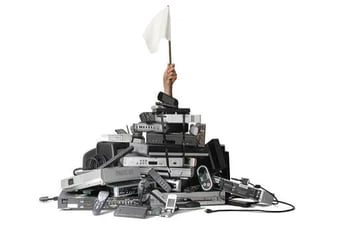


This post is for retail buyers, but here's a question: Do you know what makes a Rolls Royce a Rolls Royce?
Yes, they are totally custom-built. And yes, a very expensive automobile.
But what makes each car so costly are the redundant systems.
For example, there's not one set of brakes but three. For a Rolls Royce, those backup systems make an incredibly safe ride. That's why they get a premium price.
For a retailer buyer, redundancy is costly - that's money getting dusty on the sales floor!
When I do business makeovers, owners are often shocked when I point out multiple products in a slow category. An example is a toy store featuring six children's play tea set brands. They gasp, "How did so many of THOSE get there?"
Like some evil gremlin came in and stocked their shelves with excess merchandise.
Is there a new trend you're riding, and you continually sell out? Did Oprah mention it in her magazine? Then maybe. Maybe it's OK.
But usually, it's just sloppy retail buying habits. Not gremlins.
The danger with multiple products is that they are not "different enough," so you'll overwhelm your Feeler customers. They'll shut down.
Because they can't see any real differences, they'll either decide by price - what's on sale or the cheapest - or leave. Neither of which builds your personal fortunes.
1. Know your stock. Keep your best-sellers in stock by monitoring your POS category reports. Check sales within each category every week, and balance to outstanding orders.
2. Cull your stock. Cut those that continue in the bottom 20%- even if you really "love it."
3. Plan your stock. Before buying anything, make sure you know what it will replace. Impulse is for customers, not store buyers.
4. Build to your stock level. Create an optimal level of merchandise based on your POS reports, your merchandise turn, and profitability, then create your open-to-buy and buy-to-fill. If, for example, you found you had 48 child's tea sets in stock (eight of six styles), but you only sold one a month, that would take nearly four years to get your money back.
In Sum
You can be the premium retailer in your area if you avoid being redundant. That starts with your retail merchandising.